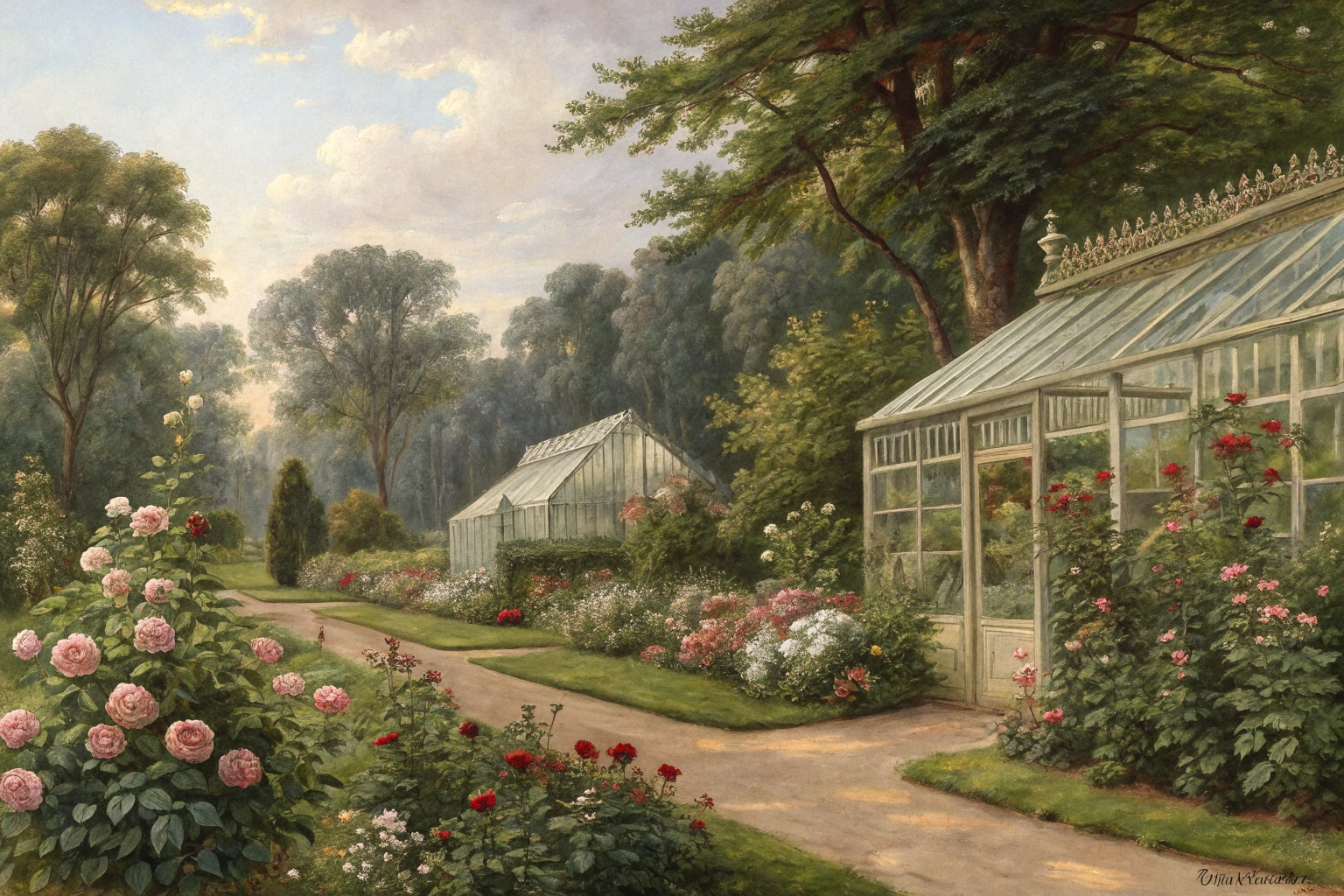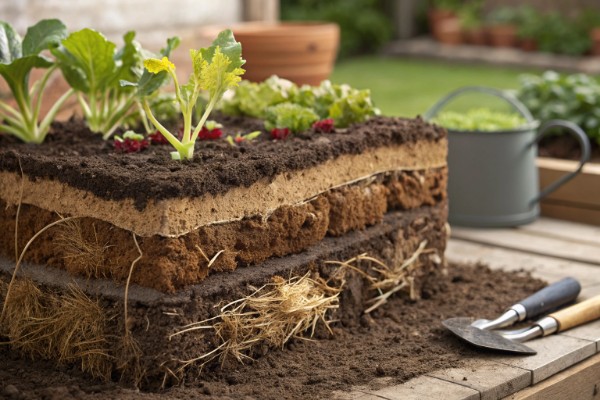Hotbeds: Elevate Your Vegetables with Heat Techniques

Hotbeds
Build hotbeds to speed up vegetable growth by weeks. Using simple, heated frameworks, hotbeds help seedlings thrive even through biting cold. Try hotbeds to enjoy earlier harvests and vigorous plants—here's how to get started.
Cheatsheet: Boost Vegetable Growth Using Hotbeds
🔥 Why Use Hotbeds?
- Pace vegetable growth 2–6 weeks earlier
- Cultivate eggplants, tomatoes, peppers before last frost
- Boost vitamin content in spring greens
- Increase food security, maximize harvests
- Victorian gardeners grew pineapples in winter hotbeds!
📝 Tools and Products You'll Need
- Pitchfork or manure fork
- Shovel
- Thermometer (soil)
- Watering can
- Fresh horse manure (or cow, sheep)
- Straw or bedding
- Garden soil or compost
- Cold frame, glass, or plastic cover
⏱️ Fast Setup Steps
- Site: Select a sunny, wind-protected area.
- Layer (Prep): Pile 12–24 in (30–60cm) fresh manure + straw. Moisten.
- Compact: Tread or press down for firm, even layer.
- Heat (Wait): Wait 5–7 days for heat to peak (120–150°F / 50–65°C).
- Add Soil: Spread 6–8 in (15–20cm) soil/compost on top.
- Cover: Place cold frame, old window, or plastic sheet for insulation.
- Sow: Plant seeds or transplants once bed cools to 75–85°F (24–30°C).
- Ventilate: Prop open covers daily to prevent mold and overheating.
🌡️ Tips for Strong Results
- Use fresh, not aged, manure for max heat
- Check temps daily: aim for steady 70–80°F (21–27°C)
- Reseed leafy greens every 2–3 weeks
- Rotate crops after 4–6 weeks to prevent disease
🥗 Nutrition, Health & Self-Sufficiency
- Spring greens can contain 2x more nutrients when grown early
- Fresh salads from March support diverse, gut-healthy diets
- Hotbeds support resilient, year-round food supply
Hotbeds: Ancient Wisdom Meets Modern Gardening Magic
I remember vividly the first time I built a hotbed—I was skeptical. Compost, heat, veggies; sounded a bit too good, a little folklore-ish even.
Yet, two months later, munching on late-season spinach when frost had claimed everything else—my skepticism softened into reverence. Hotbeds work, and they're worth mastering.
What Exactly Are Hotbeds?
Simply put, a hotbed is a gardening structure using decomposing organic matter—usually manure with straw—to generate heat for seedlings and plants.
Think compost heap meets cold frame. Warmed by microbial breakdown, the soil within these enclosed beds creates a cozy, fertile environment for plants to thrive in cooler months.
"A well-built hotbed can maintain temperatures between 70-90℉ (21-32°C), extending your growing season by several weeks or even months."
Building Your Hotbed: Step-by-Step Wisdom
If you're ready to build one, follow my tried-and-true method:
- Location, location, location: Choose a sunny, sheltered spot. Sun boosts heat retention, while protection from harsh winds helps maintain stable temperatures.
- Gather your ingredients: Fresh horse manure mixed with straw is ideal. Avoid purely wood-based compost—it decomposes slowly, offering less heat.
- Construct your frame: Mine are typically wooden boxes, about 3 feet (90 cm) deep and at least 4 feet by 6 feet (1.2 m by 1.8 m). Slightly slope the top southward for maximum sun exposure.
- Layer it right: First, a thick, fluffy blanket (18 inches or 45 cm) of manure-straw mixture. Pack lightly. On top, spread fertile garden soil—around 6 inches (15 cm) deep.
- Cover it up: Finish with a transparent lid—glass or polycarbonate. I prefer the latter—lightweight, durable, smarter insulation.
Maintaining Your Hotbed: A Dance of Heat and Moisture
Once established, your hotbed demands attention, though she's easygoing if you check daily.
- Monitor temperature with a simple soil thermometer. Ideal soil temperature for most seedlings: 70℉ (21°C).
- Ventilation matters—prop the lid open slightly to relieve excess heat on sunny days or the interior can quickly cook your precious seedlings.
- Water sparingly but consistently. Keep soil moist—not soggy. Reverse condensation, droplets on the inside of your lid, signals good humidity.
Best Veggies for Your Heated Haven
Now for the fun part—choosing your crops. Lettuce, spinach, radishes, carrots, peas, and beets all have thrived in my hotbeds during early spring and well into chilly autumn.
Feeling adventurous? Try germinating peppers or tomatoes earlier in the season. Just keep an eye on nighttime temperature dips.
Mistakes I've Made (and How to Avoid Them)
I've learned my lessons through mishaps, big and small:
- Too fresh manure: Fresh is hot, but too fresh scalds roots. Let it age a week before layering.
- Neglecting ventilation: Forgot to prop the lid once—lost a batch of seedlings faster than melting ice cream. Vent regularly.
- Unleveled Frame: Uneven frames pool moisture, invite rot. Take the extra hour and level carefully.
"Success with hotbeds lies not in complexity, but in mindful simplicity and attentive gardening."
Hotbeds: Rediscovering Garden Alchemy
Experience teaches that gardening involves equal parts intuition, practice, and curiosity. Hotbeds rekindle old wisdom, applying compost heat to create abundance.
With patience and thoughtful observation, you'll soon savor fresh produce long past the normal growing window—and trust me, that first crunchy salad harvested amid late-autumn chill tastes like pure garden magic.
Frequently Asked Questions about Hotbeds
What vegetables benefit most from growing in hotbeds?
Heat-loving tomatoes, peppers, melons, cucumbers, and eggplants respond especially well to hotbed cultivation. Leafy greens and root vegetables can also benefit during cooler periods for an early or late harvest.
How deep should a hotbed typically be?
Standard hotbeds measure approximately 24 inches (60 cm) in depth. This depth provides adequate space for a warm composting layer beneath a top soil layer, encouraging optimal heat generation and plant growth.
What compost materials work best for heating hotbeds?
A blend of fresh manure, straw, leaves, or similar organic matter decomposes actively, producing sustainable warmth. Fresh horse manure combined with straw is especially effective, steadily raising soil temperatures as it composts.
How warm does a properly constructed hotbed become?
A well-managed hotbed typically reaches temperatures of around 70-90°F (21-32°C) at the compost layer. This natural heat gently warms the surface soil, maintaining ideal conditions for sensitive seedlings or delicate crops.
Should hotbeds be ventilated, and how often?
Yes, proper ventilation maintains an optimal temperature range and humidity. Open frames or lift covers slightly during sunny, warm days and close them during colder nights to sustain a stable, beneficial environment.
How often does the composting material in a hotbed need replacing?
Compost layers remain actively warm for approximately 4-6 weeks. Afterward, replenish or replace deteriorated material to restore consistent warmth. Ideally, refresh the compost between seasonal plantings for peak performance.
Can hotbeds extend the growing season significantly?
Using a hotbed can effectively lengthen your growing season by around 6-8 weeks, allowing earlier planting in spring and later harvests into autumn or early winter.
Hotbeds put you in control. With a simple blend of fresh manure, straw, and old-fashioned grit, you give your vegetables a head start while winter still lingers. This method lets you ripen tomatoes, coax out early lettuce, and grow prize radishes weeks before your neighbors. Hotbeds add warmth below the roots, pushing seeds awake even when the world above is still sleeping.
If you crave an edge, build one. The payoff is real: stronger starts, richer flavors, and a longer season. Hotbeds don’t require fancy gear—just effort and respect for the old ways. It’s one of gardening’s oldest tricks, and it still works.
Health Benefits of Hotbed-Grown Vegetables
Enhanced Nutrient Density
Hotbed heating accelerates vegetable growth, increasing vitamin C, antioxidants, and essential minerals compared to standard-grown produce.
- Spinach: Up to 20% higher iron content from hotbed cultivation.
- Carrots: Increased beta-carotene by approximately 15% through consistent soil warmth (around 65°F/18°C).
- Kale: Boosted antioxidant levels by nearly 25% due to controlled heat conditions.
Improved Digestive Health
Warmer, nutrient-rich soils cultivate beneficial microbial activity, enriching vegetable fiber content to support gut health and digestion efficiency.
Year-Round Immunity Support
Continuous access to fresh produce from hotbeds delivers reliable sources of immune-supportive nutrients, especially vitamins A and C, reducing seasonal illness susceptibility.
Mental Health & Well-being Boost
Regular interaction with heated gardens during colder months elevates mood and reduces stress hormones by aiding serotonin production through sunlight and hands-on gardening activities.
Food Security & Self-Sufficiency
Hotbeds effectively extend growing seasons, increasing household vegetable yields by up to 40%, significantly improving self-reliance and reducing store-bought dependency.
Find out which plants will thrive in your garden!
Answer a few fun questions and get custom plant recommendations perfect for your space. Let’s grow something amazing together!

start your season






